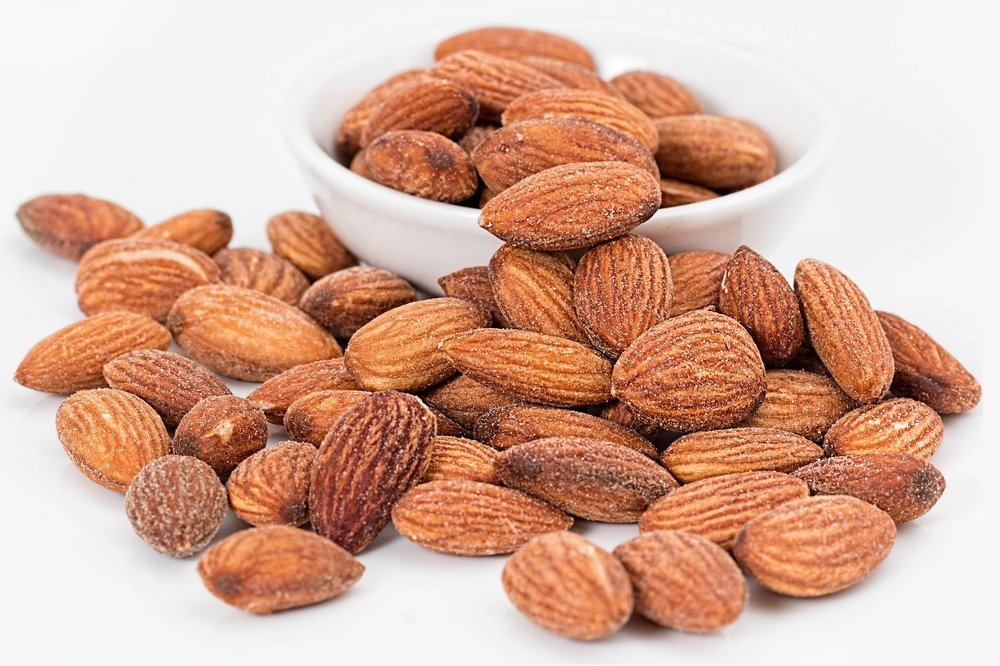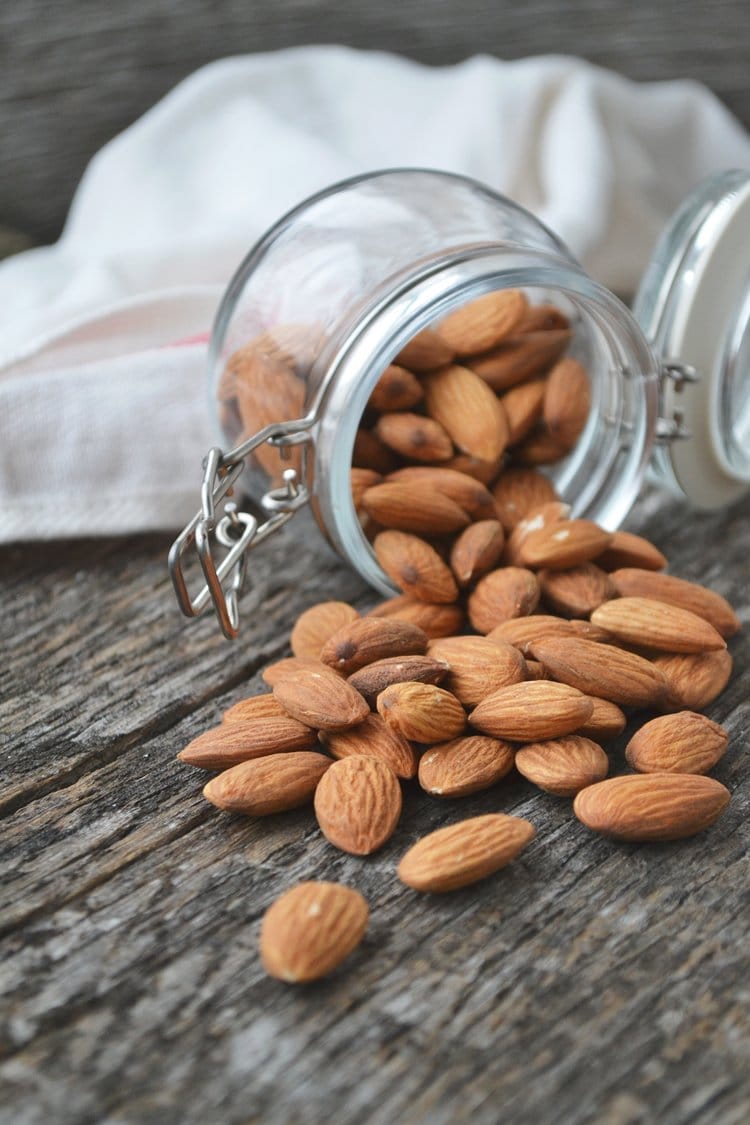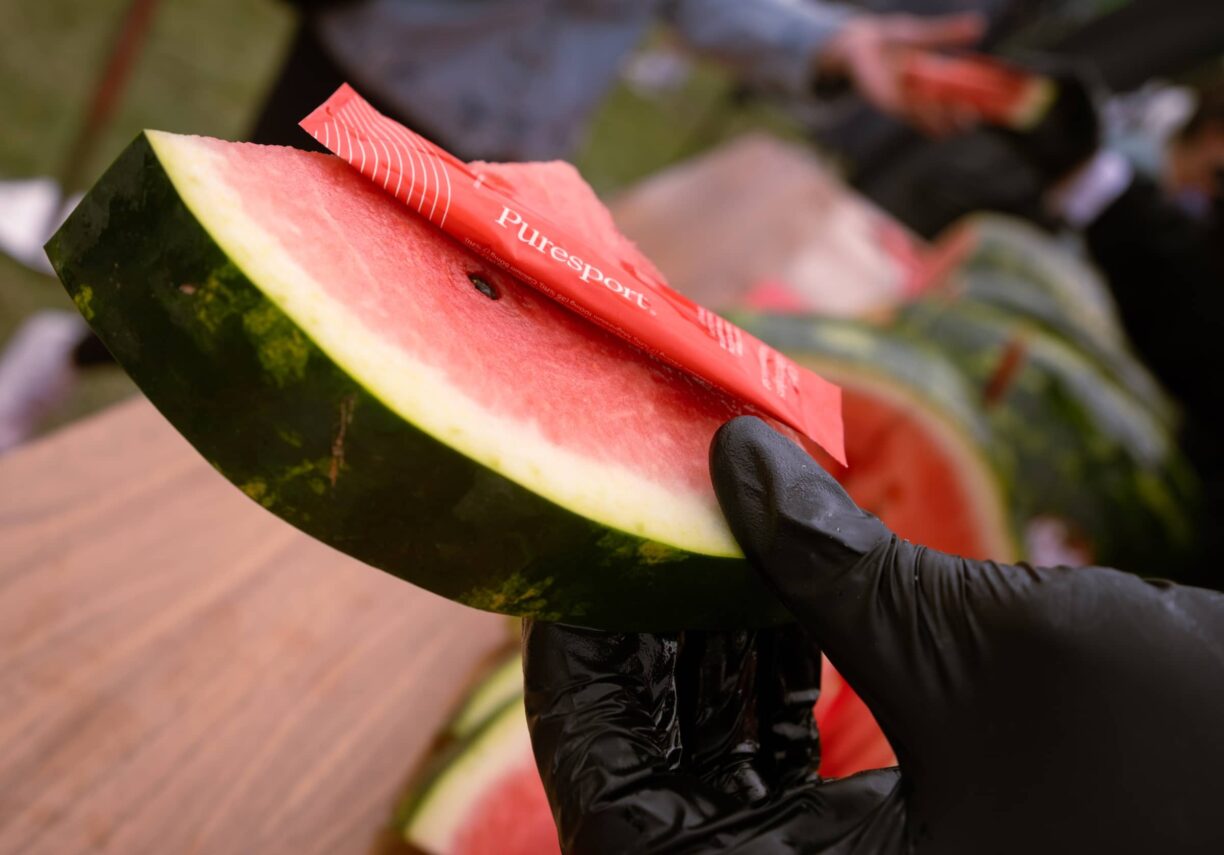Anti-ageing regimens abound but emerging research suggests that one delicious addition to your skincare routine may be in your pantry instead of your makeup kit: almonds.
A new pilot study by researchers at the University of California – Davis (USA) found that a daily snack of almonds in place of other nut-free snacks improved measures of wrinkle width and severity in postmenopausal women.
The study was funded by the Almond Board of California and is the first of its kind to examine almonds’ effects on skin health. A larger and longer-term follow-up study is underway.
In this 16-week randomised controlled trial, 28 healthy postmenopausal women with Fitzpatrick skin type 1 or 2 (characterised by an increased tendency to burn with sun exposure) were randomly assigned to one of two groups.
In the intervention group, women ate almonds as a snack, which accounted for 20% of their total daily calorie intake, or 340 calories per day on average (about 2 30-gram servings).

The control group ate a nut-free snack that also accounted for 20% of calories: a cereal bar, granola bar or pretzels.
Aside from these snacks, study participants ate their regular diets and did not eat any nuts or nut-containing products.
Skin assessments were made at the start of the study, and again at 4 weeks, 8 weeks, 12 weeks and 16 weeks. At each visit, facial wrinkles were assessed using high-resolution facial imaging and validated 3-D facial modelling and measurement.
“These high-resolution cameras allow for 3-D reconstruction of any wrinkles so that they can be mapped for their key characteristics of width and severity. The severity score is a calculation of the depth and length of a wrinkle,” explains Raja Sivamani, MD MS AP, integrative dermatologist and lead researcher on the study.
Skin barrier function was also assessed, by measuring sebum production and transepidermal water loss (TEWL). Skin barrier function examines the strength of the skin barrier and how well it protects skin from moisture loss (TEWL) and from harmful irritants coming from the environment.
By the end of the study at 16 weeks, photographic image analysis showed statistically significant improvements for participants in the almond snack group compared to the control group (P<0.02):
· Wrinkle width decreased by 10%
· Wrinkle severity decreased by 9%
There were no significant changes in skin barrier function between groups.
“Food as a means of promoting skin health – the ‘health from the inside out’ idea – is of growing interest to those looking for options for healthy ageing,” says Dr. Sivamani.
“It’s also a growing area of scientific research. Almonds are a rich source of the antioxidant vitamin E and deliver essential fatty acids and polyphenols.
They’re a smart choice for overall good nutrition. And, as seen in this study, almonds may hold promise as a food to include as part of a healthy ageing diet, especially for post-menopausal women.”
Leading Registered Nutritionist Rhiannon Lambert comments: “This research is the first of its kind for any nut where we are seeing scientifically measured benefits on skin wrinkles from eating almonds.
Almonds have long been thought to be good for our skin, but this is the first study to show them have a real impact! Moreover, almonds provide zinc, niacin and riboflavin – all nutrients that help maintain our skin. A portion of almonds is 28 grams or 23 almonds.”
Study at a Glance:
The Study: 28 healthy, postmenopausal women with Fitzpatrick skin type 1 (always burns, never tans) or 2 (usually burns, tans minimally) were randomly assigned to either an intervention or a control group.
Almonds were provided as 20% of total daily calorie intake for the intervention group (340 calories/day on average), about 2 30-gram servings.
The control group consumed a calorie-matched nut-free snack in place of almonds daily: cereal bar, energy bar or pretzels.
All participants were advised not to consume any nuts or nut-containing products over the course of the study (except for the almond snack for the intervention group). They otherwise were advised to continue their usual daily energy intake.
After a four-week dietary wash-out period, participants were randomised to one of the two study groups detailed above. Study visits occurred at baseline, 4 weeks, 8 weeks, 12 weeks and 16 weeks.
Facial wrinkles were assessed using high-resolution facial photography and validated 3D facial modelling and measurement at baseline, 8 weeks and 16 weeks.
Skin barrier function was assessed by measurement of sebum production and transepidermal water loss (TEWL).
Results:
· Photographic image analysis showed that the almond group had significant reductions in wrinkle severity and width, by 9 and 10%, respectively, compared to the control group at the 16-week time point (P<0.02).
· There were no significant differences in sebum production between groups after 8 and 16 weeks.
· There were no significant differences between groups in transepidermal water loss (TEWL) from baseline after 8 and 16 weeks.
· There were no significant changes from baseline in the skin barrier function (P=0.65) between the almond and control groups relative to baseline after 16 weeks.
Study Limitations: Ageing is a long-lasting process so the findings from this 16-week study may be difficult to reproduce and generalise to extended periods of time.
Skin ageing is also multi-factorial in nature and although certain groups were excluded (i.e., those with a smoking history), there is variance in ageing confounders, such as frequency of UV light exposure and emotional stress, which were outside the scope of the study. This study was limited to cosmetic evaluation, as no measurements were made regarding collagen production.
The study did not evaluate disease or younger subjects, so results are limited to otherwise healthy post-menopausal females. In addition, this was a pilot study with a limited number of participants. Future studies should expand to a larger recruitment pool.
Conclusion: Results of this pilot study suggest that daily consumption of almonds may play a role in reducing wrinkle severity in post-menopausal women.
The outcomes warrant future studies with expanded population groups and additional evaluations for signs of skin ageing.





